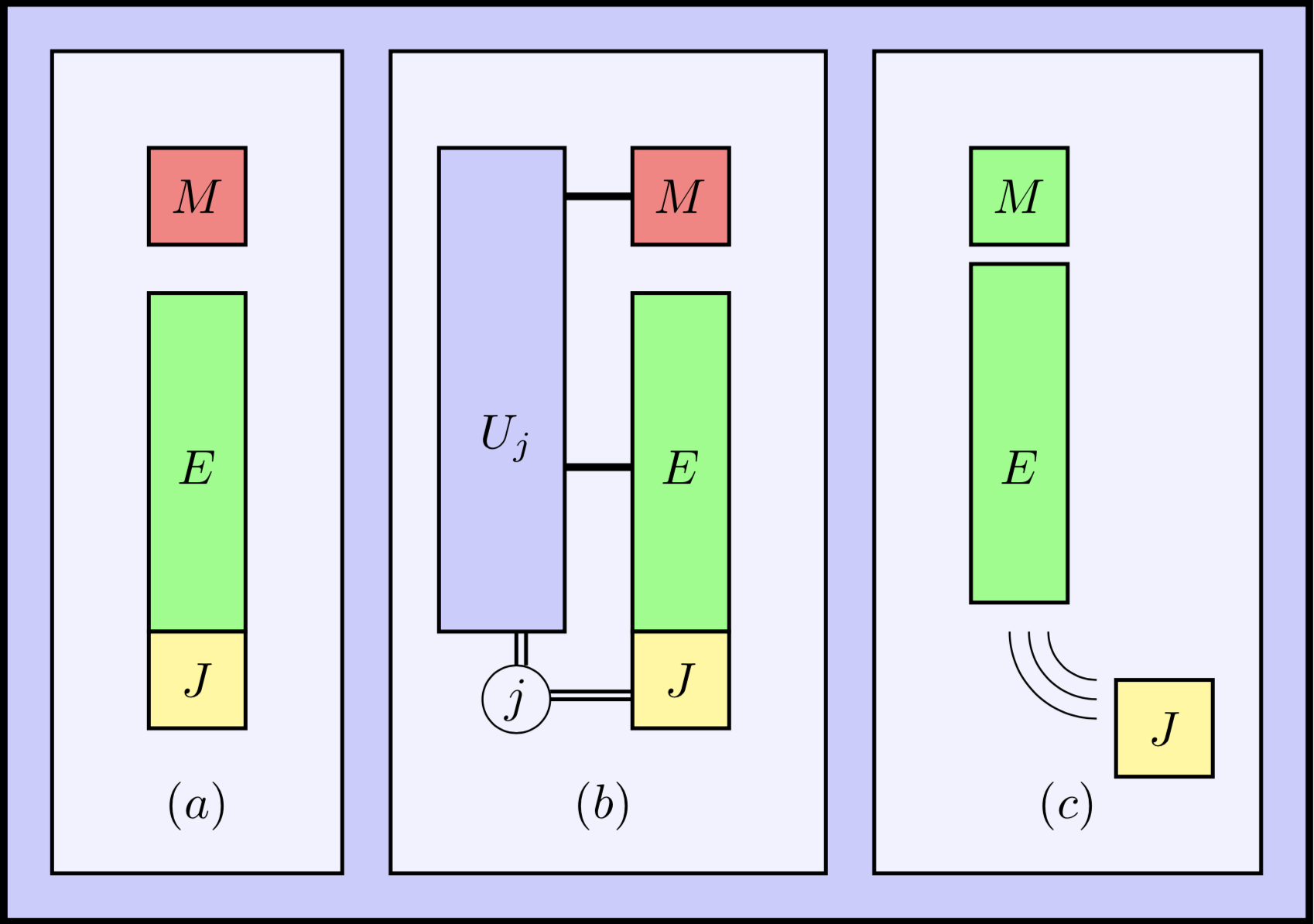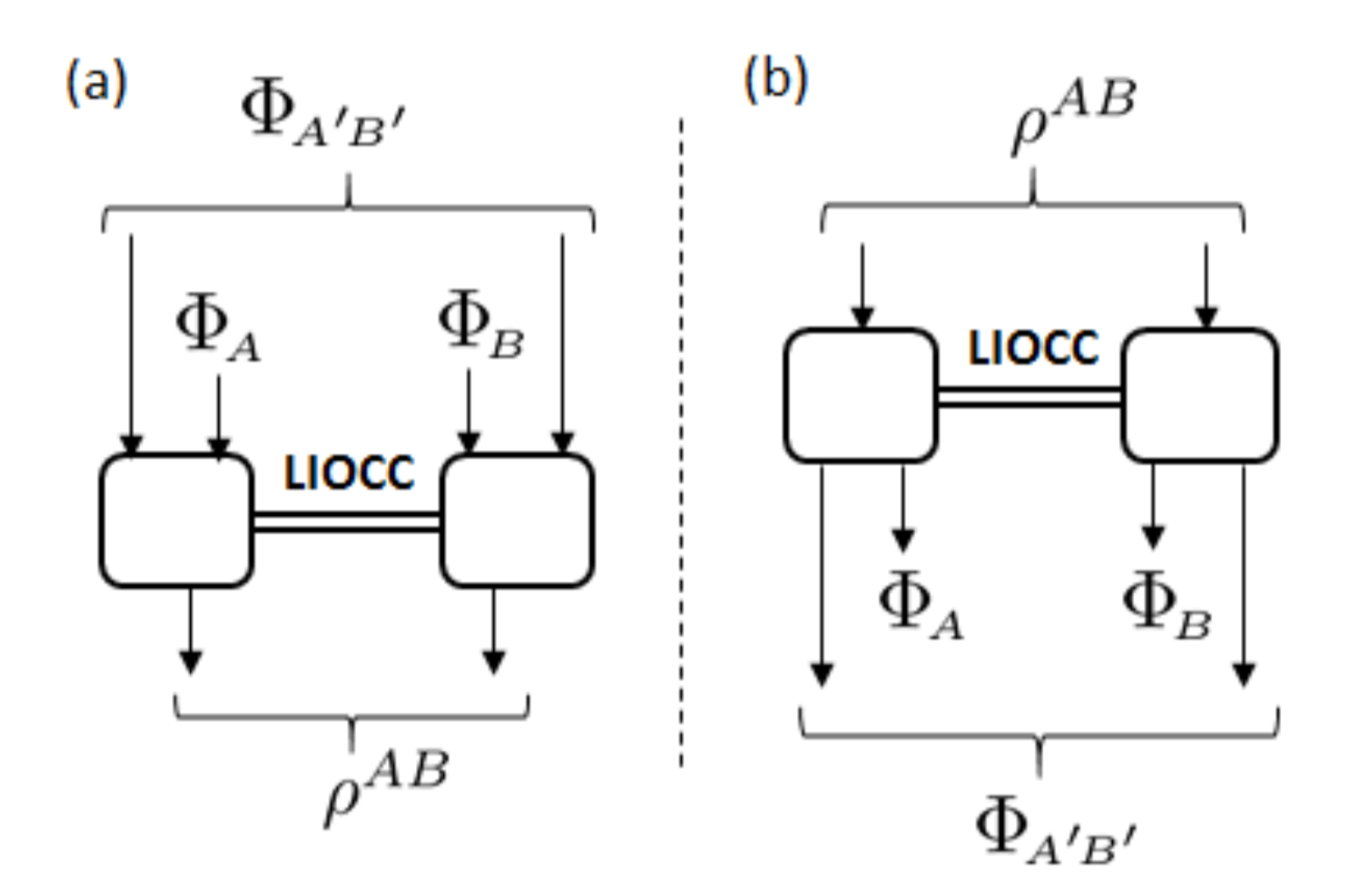General Resource Theory
UTS Centre for Quantum Software and Information
[1] Anurag Anshu, MH, Rahul Jain. Quantifying resource in catalytic resource theory. Accepted in Physical Review Letters. [arXiv:1708.00381].
[2] Eric Chitambar, MH. Relating the Resource Theories of Entanglement and Quantum Coherence. Physical Review Letters, vol. 117, p. 020402 (2016).
[4] Yu Luo, Yongming Li, MH. Inequivalent Multipartite Coherence Classes and New Coherence Monotones. [arXiv:1807.06308].
[3] Madhav Krishnan Vijayan, Eric Chitambar, MH. One-shot assisted concentration of coherence. [arXiv:1804.06554]
Resource Theory
(1): Free States
(2): Free Operations
Part I:
How to quantity the amount of resources?
[1] Anurag Anshu, MH, Rahul Jain. Quantifying resource in catalytic resource theory. Accepted in Physical Review Letters. [arXiv:1708.00381].
Main Result:
The amount of resource in \(\rho_M\) is equal to \(E^\infty(\rho_M)\)
It works for
1. Free States form a convex and close set.
2. Free States remain free under tensor product and partial trace.
Concrete Examples
1. Entanglement
2. Coherence
3. Asymmetry
4. Purity
Regularized Relative Entropy of Entanglement is a right measure for the "quantumness".
Resolved an open question in [1].
[1] Groisman, Popescu, and Winter, “Quantum, classical, and total amount of correlations in a quantum state,” Phys. Rev. A, vol. 72, p. 032317, 2005.
Remark
Setup
1. The amount of resource equals the amount of noise used to erase it.
2. Catalyst is allowed.

Remark
1. Matching one-shot bounds.
2. Convex Splitting Lemma is used.
Part II:
Interplay of Entanglement and Coherence Resources
[2] Eric Chitambar, MH. Relating the Resource Theories of Entanglement and Quantum Coherence. PRL, vol. 117, p. 020402 (2016).

(a) Coherence - Entanglement Formation
What is known...
\(R_A\geq S(X)_{\Delta(\Psi_A)}\),
[*] X. Yuan, H. Zhou, Z. Cao, and X. Ma, Phys. Rev. A 92, 022124 (2015). [*] A. Winter and D. Yang, Phys. Rev. Lett. 116, 120404 (2016).
(i) \(E^{co}\geq \mathrm{E}(\Psi)\),
(ii) \(R_A+R_B\geq S(XY)_{\Delta(\Psi)}\),
(iii) \(R_B+E^{co}\geq S(XY)_{\Delta(\Psi)}\)
Result (a)
For a pure state \(|\Psi_{AB}\rangle\),
Remark
We result coincide with formation of a mixed state \(\rho\) is given by \(C_F(\rho)\) [1].
[1] A. Winter and D. Yang, Phys. Rev. Lett. 116, 120404 (2016).
However, we need extra \(E^{co}\geq \mathrm{E}(\Psi)\) because of the distributed settings.
Let \(C_M(\Psi):=S(X)_{\Delta(\Psi)}+S(Y)_{\Delta(\Psi)}-{E}(\Psi).\)
\(C_M(\Psi)\) is an LIOCC monotone.
\(C_M(\Psi)=C_a^{A|B}(\Psi)+C_r(\Psi^A).\)
Proof:
Theorem:
\(C_M(\Psi):=S(X)_{\Delta(\Psi)}+S(Y)_{\Delta(\Psi)}-{E}(\Psi).\)
Remark
is an LIOCC monotone, but not an LOCC monotone
(b) Coherence - Entanglement Distillation
What is known...
\(R_A\leq S(X)_{\Delta(\Psi_A)}\),
[*] A. Winter and D. Yang, Phys. Rev. Lett. 116, 120404 (2016).
Result (b)
For a pure state \(|\Psi_{AB}\rangle\),
(i) \(R_A+R_B\leq C_{M}(\Psi)\)
(ii) \(R_B+E^{co}\leq S(Y)_{\Delta(\Psi)}\)
(iii) \(E^{co} \to \) our paper.
Coherence deficit
Part III:
Assisted distillation of resources
[3] Madhav Krishnan Vijayan, Eric Chitambar, MH. One-shot assisted concentration of coherence. [arXiv:1804.06554]
One-Shot Assisted distillation of resource
Theorem
holds
if \(\Phi^n \gamma \Phi^n \leq \frac{1}{2^n}\Phi^n\)
Resource
Theory
Entanglement
Coherence
Purity
Part IV:
Multipartite Inequivalent Coherence Classes
[4] Yu Luo, Yongming Li, MH. Inequivalent Multipartite Coherence Classes and New Coherence Monotones. [arXiv:1807.06308].
How many are there for 3-qubit coherence states?
For 3 qubits, there are only two inequivalent entanglement classes under SLOCC.
There are already infinite many inequivalent coherence classes under SLICC for two qubits.
Main Result
# of product
terms
Classification